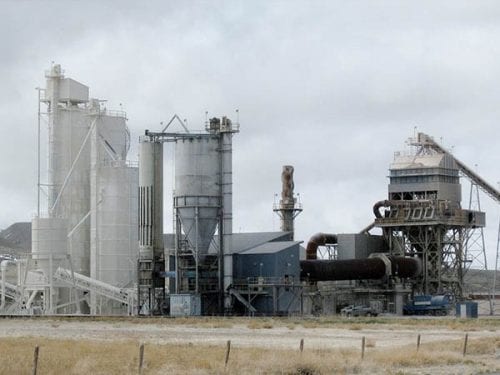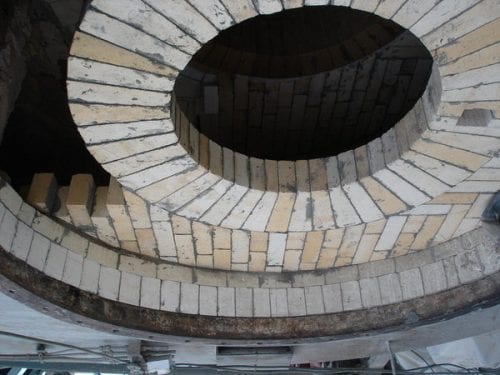As per the kiln operating temperature, heat transfer inner vertical shaft lime kiln can be divided into three parts:

Home » Solutions » Lime Kiln Refractory Linings » Refractories recommendation for vertical shaft lime kiln lining
As per the kiln operating temperature, heat transfer inner vertical shaft lime kiln can be divided into three parts:

A.Preheating zone.
Limestone is heated from ambient to above 800 °C by direct contact with the gases leaving the calcining zone (i.e. products of combustion, excess air and CO2 from calcination). In this area, the working temperature is lower, but the lining brick needs to be with good wear resistance and cold compressive strength, considering the raw material crushing through the lining up to down. Usually recommendation with clay fire bricks, but following the lime industry development, more large scale lime kilns are adopting high alumina fire brick instead of fire clay brick to length kiln service life.
B.Burning zone/Calcining zone.
Fuel is burned in preheated air from the cooling zone and (depending on the design) in additional “combustion” air added with the fuel. This produces a temperature of over 900 °C and causes dissociation of the limestone into quicklime and carbon dioxide. The operating temperature in burning zone is highe with 1100℃~1200℃, it requests lining brick with superior wear resistance and high temperature resistance, and also highly compressive strength, and anti-erosion character. In earlier years, fire clay brick with refractoriness above 1700℃ is widely used, but the service life is shorter as the lining damage. Today, high alumina brick is the first choice, some manufacturers also adopt basic refractory bricks like Magnesia Chrome brick for meeting their capacity demand, service life can be lengthed 2-3times compared with high alumina brick, but costly. In recent years, Phosphate combined with high alumina brick is a good solution for lime kiln linings.
C.Cooling zone. Quicklime leaving the calcining zone at 900 °C is cooled by direct contact with “cooling” air, part or all of the combustion air, which in return is preheated.This area working condition is similar with preheating zone, usually low porosity fire clay brick is recommended.
During new lime kiln construction, working lining can be adopted with high alumina brick, the second layer with fire clay brick, and thermal insulation layers can be with high strength clay insulation fire brick, the outer layer with pearl powder bonded with refractory cement.
Suggestions: High alumina castable is a kind of castable refractory cement with high alumina content, and low cement, well known as its high strength, good wear resistance, and good thermal shock resistance at high temperature above 1300℃. It’s widely used for lime kiln lining in sugar factory, lining wall of boilers. It can improve the kiln service life2~3years, to avoid repairing linings frequently.


Pre:
Next:
Please feel free to give your inquiry in the form below. We will reply you in 24 hours.

Feel free to contact us!
Our professional team will reply to you as soon as possible.
